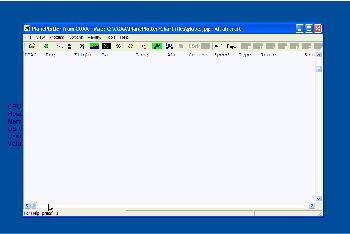

- Planeplotter current position software#
- Planeplotter current position professional#
- Planeplotter current position free#
These combinations have a higher expenditure on installation components and software modules and are only for freaks and hobbyists. The receiver front end is represented by an ADS-B USB dongle. In order to have computing power out of your PC, or to save power in a 24/7 operation, quite often small microcomputers such as the Raspberry Pi are used for ADS-B decoding. This can be done with an extra software, which also usually takes over the representation of the flight movements on maps or special air traffic maps. To decode ADS-B signals, software logic is required on the computer.

The mostly used DVB-T dongles are made for television signals and do not have a very high dynamic range, so they lose performance in means of sensitivity on long range or situations when strong signals meet weak signals. Due to the broad frequency spectrum of these receivers, a bandpass filter must usually be connected in order not to exceed the receiver. This means that the dongle has only one adjustable receiving circuit but does not itself decode the ADS-B signals. At this point we would like to present the different possibilities, advantages and disadvantages of the various concepts.ĪDS-B USB dongles are SDR receivers (Software Defined Radio). Especially in the lower price segment buzzes a lot of sellers.
Planeplotter current position professional#
Starting with a simple SDR USB dongle solution to a professional ADS-B receiver, there is a wide range. There is a big difference between the receivers. In addition to a 1090 MHz antenna suitable for the frequency range, an ADS-B receiver is required.
Planeplotter current position free#
The described ADS-B signals of the aircraft are free to be received, to increase aircraft security they are broadcast signals that should be received by others. Physically those filters are bigger than others, and a little bit more expensive. A filter must have a high, so called filter quality, this means a very low attenuation together with a small bandwidth. Together with a long cable distance, this is a very bad scenario. The result is, you will lose a lot of your signal strength. They do not have a sufficient small bandwidth and quite often they have also significant attenuation.

But be aware, most of the (cheap) filters have very bad parameters. This is, because these transmitters are very close with their frequencies to your required 1090 MHz signal. GSM or radar close to your ADS-B antenna, your receiver may be overloaded. What Do You Need for Real Time Flight Tracking? However, other techniques such as MLAT (Multilateration) are used to capture these aircraft in the airspace as well.Ģ. This is especially true for small private and military aircraft. ADS-B functionality also enhances surveillance on the airport surface, so it can also be used to monitor traffic on the taxiways and runways of an airport.ĪDS-B is now widely used in air traffic, but not all aircraft are equipped with it. ADS-B is lower cost than conventional radar and permits higher quality surveillance of airborne and surface movements. The initial use of ADS-B was for air traffic control, for surveillance purposes and for enhancing pilot situational awareness. Reception by aircraft of ADS-B data is known as "ADS-B in". The ADS-B radio messages are received by air traffic control stations, and all other ADS-B equipped aircraft within reception range. The maximum range of the system is line-of-sight, this means typically 200 nautical miles (370 km), because of the Earth curvature. The current ADS-B system relies on data from the Global Positioning System (GPS), or any other navigation system e.g. This functionality is the basic level of ADS-B and known as "ADS-B out”. What do you need for real time flight tracking?Īutomatic Dependent Surveillance- Broadcast ( ADS-B) is a worldwide aviation system on 1090 MHz used by aircraft in order to constantly broadcast their current position, altitude, air speed, identification, whether the aircraft is turning, climbing or descending, category of aircraft over a radio message.


 0 kommentar(er)
0 kommentar(er)
